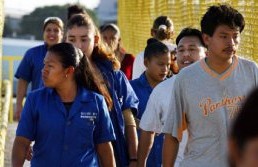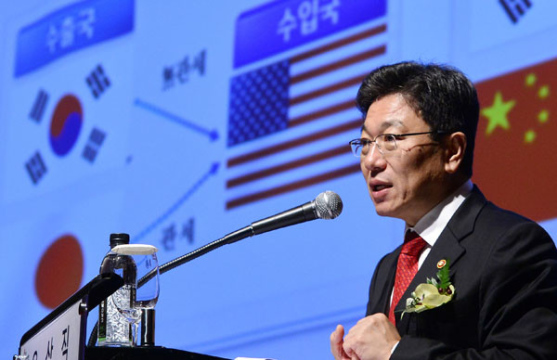
Mexican vs Chinese Factories
With the rising cost of wages in China, manufacturers are increasingly considering Mexico an attractive location to ‘re-shore’ production.
This post is also available in: Spanish
After prolonged opposition, teachers and principals from primary schools were finally tested this past July in Mexico, kicking off phase one of the Universal Assessment (Evaluación Universal). The assessment sought for the first time in the country’s history to evaluate all teachers – both public and private, from preschool through high school (in later years). But while the plan sounded good in theory, only 50% of teachers actually showed up on test day.
Mexican teachers have been tested on a voluntary basis for two decades through a program called Carrera Magisterial (CM – teacher incentive program). Seeking to improve on this strategy, the new Universal Assessment, signed in May 2011, seeks to comprehensively measure the performance of all teachers in order to improve both teacher instruction and student learning. It is comprehensive because the assessment includes classroom observation, participation in teacher training courses, and student performance, in addition to the traditional teacher examination. All primary-level teachers and principals — not only those enrolled in CM –have to take it. Supposedly.
Although the test was mandatory, only 263,024 teachers took it – or approximately half of all primary teachers. Of that half, 74% were already enrolled in CM, meaning that 7 out of 10 teachers who participated in the new program would have taken it anyway, to qualify for a salary bonus. From a different perspective, out of the teachers not in CM who could have taken the exam for the first time to be assessed without a salary incentive, only 30% did so.
However you look at it, turnout was low. Why? Several factors may have discouraged teachers from participating. First, despite having signed agreements last year with the Secretary of Public Education (SEP), months before the test, the National Union of Education Workers (SNTE) decided to discourage its members from taking the test , perhaps to show their power in a presidential election year. Another factor may be that the test carries little weight. Whether teachers were in CM or not, the teacher examination is only 5% of their Universal Assessment. So, if they don’t take the exam, they still have the other components of the Universal Assessment that make up the other 95% to receive a salary bonus (if part of CM), or to receive a diagnosis without a salary bonus (if not part of CM). Finally, some teachers mistakenly believed that a low score on the test would negatively affect their salary or job status. In reality, scores will be used only as diagnosis to improve teacher performance. Maybe that’s why in five states, less than 10% of teachers showed up to take the exam, and three states (of 31) did not participate in it. It carries little weight.
But not everything is so gloomy. While three states did not take the exam, participation in five states was above 70%. Additionally, the fact that half of all eligible teachers took the test is a significant increase from previous years in which only teachers registered in CM took it. From this perspective, this year’s test evaluated 13% more teachers than the CM alone would have done. Furthermore, given the numerous union member protests in several states and intimidation by the leadership of the SNTE, the fact that the test was even conducted is an important step forward in measuring and improving the quality of education in Mexico.
Part II of The State of Teachers in Mexico will cover the recent results of the entry exam called Concurso Nacional. Certain teaching posts are awarded based on the results of this exam, and despite results for this year being very low, most teachers’ were still awarded posts.
Image from El Expreso.
With the rising cost of wages in China, manufacturers are increasingly considering Mexico an attractive location to ‘re-shore’ production.
South Korea’s entry into the TPP will promote stronger cooperation between South Korea and Latin America.
Three questions regarding education the 2012 presidential hopefuls should be pressed on.

